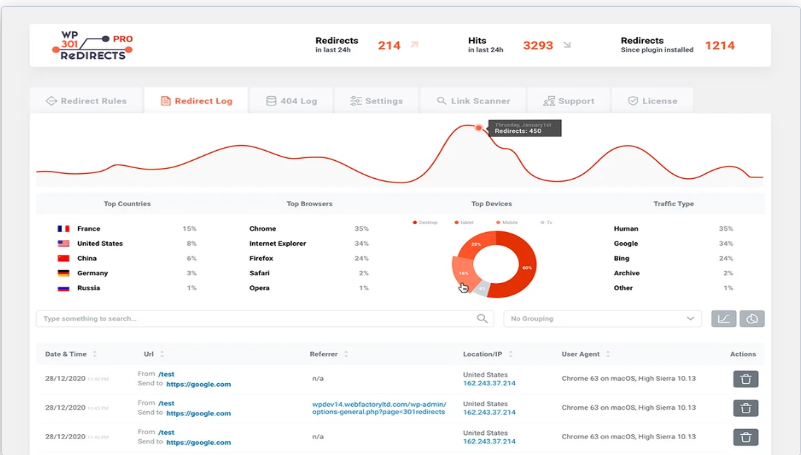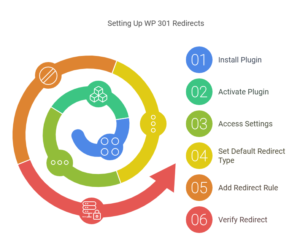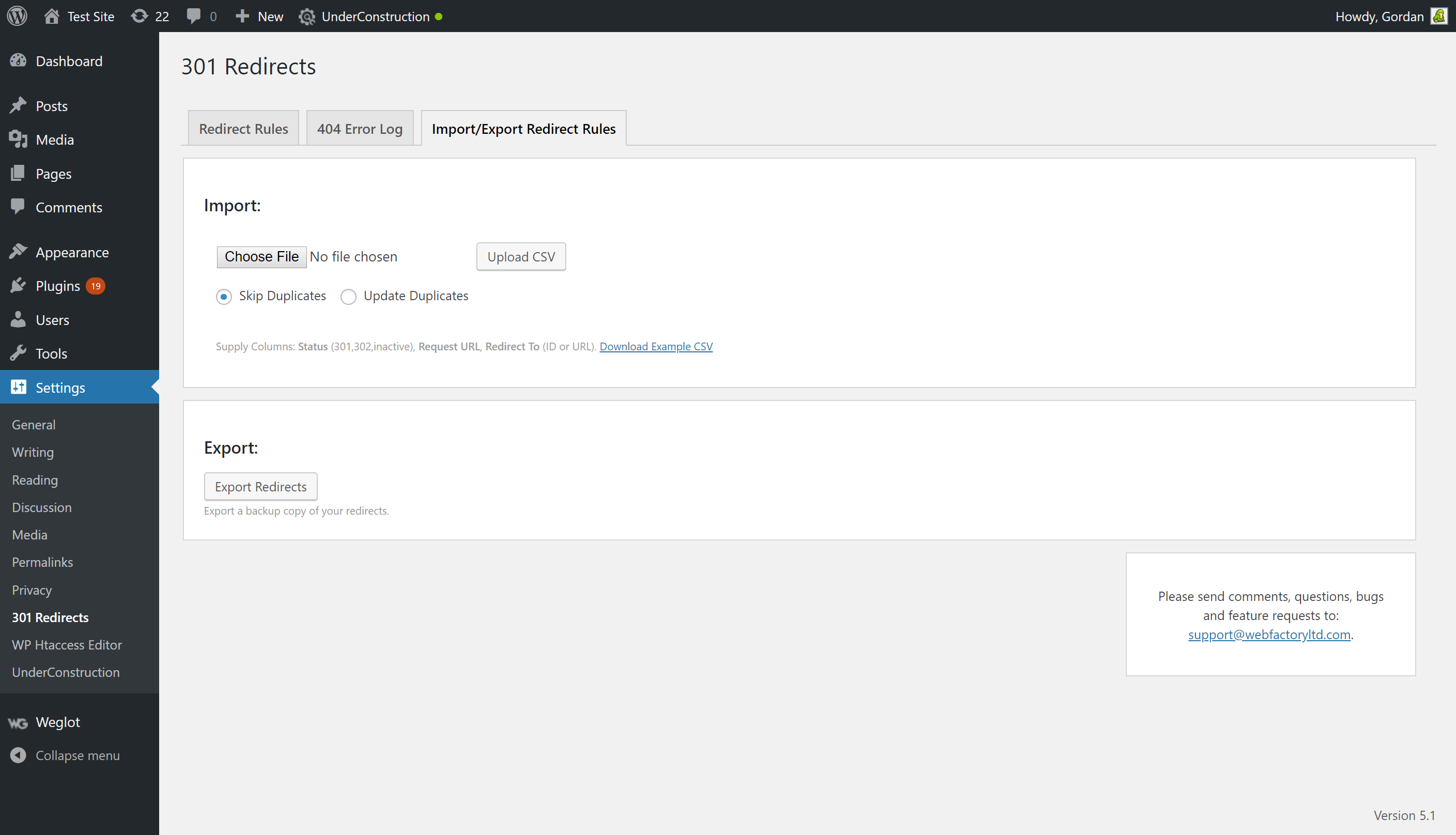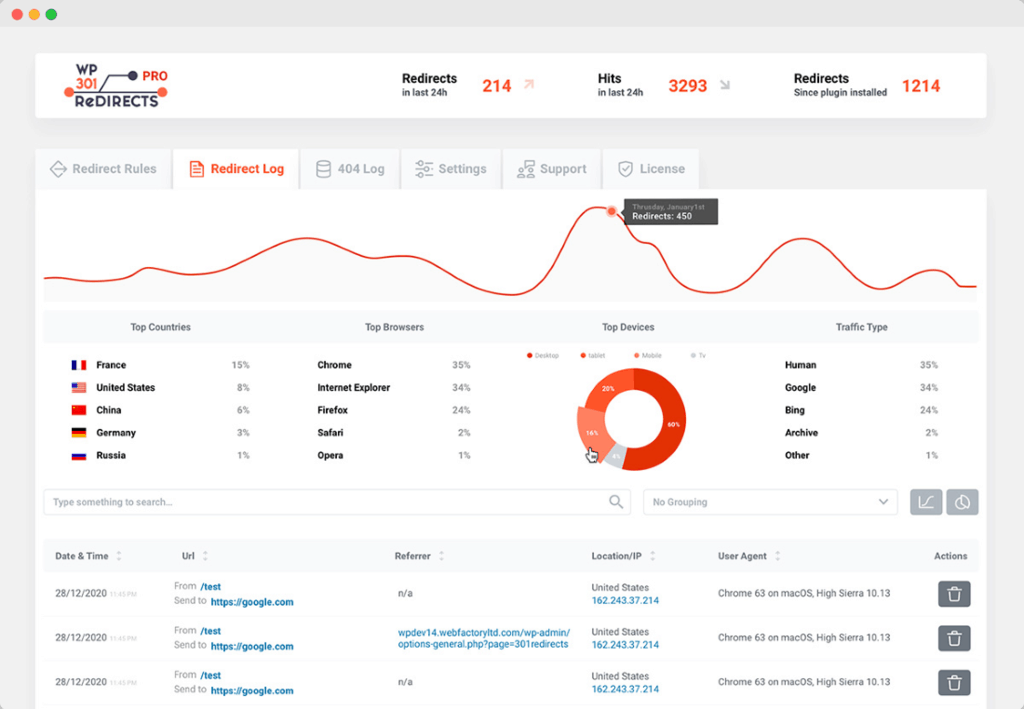WP 301 Redirects provides a seamless way to manage these issues. It helps redirect old URLs to new ones, ensuring users always find what they’re looking for. This not only improves user experience but also maintains your site’s SEO health.
In this post, we will delve into the importance of WP 301 Redirects, how they work, and why they are essential for any WordPress site. Stay with us to discover how this simple tool can keep your site running smoothly and your visitors happy.
Introduction To Wp 301 Redirects
In the world of website management, ensuring that users and search engines can find your content is crucial. One tool that helps with this is the 301 Redirect. WP 301 Redirects is a WordPress plugin designed to manage these redirects easily. Understanding its importance and how to use it can significantly improve your site’s SEO and user experience.
What Is A 301 Redirect?
A 301 Redirect is a permanent redirect from one URL to another. This means when someone visits the old URL, they will be automatically sent to the new one. For example, if you change a post’s URL from yourwebsite.com/old-post to yourwebsite.com/new-post, a 301 Redirect will guide visitors to the new URL seamlessly.
Importance In Seo
301 Redirects play a vital role in SEO. They help preserve the search engine rankings of your pages. When a page is moved, search engines need to know where the content has gone. A 301 Redirect informs them that the content has permanently moved to a new location. This helps maintain the page’s ranking and authority.
Without proper redirects, users might encounter 404 errors. These errors are bad for user experience and can harm your site’s SEO. A well-managed 301 Redirect ensures that both users and search engines find the new location of your content without any issues.
| Old URL | New URL | Status |
|---|---|---|
| yourwebsite.com/old-page | yourwebsite.com/new-page | 301 Moved Permanently |
| yourwebsite.com/old-post | yourwebsite.com/new-post | 301 Moved Permanently |
Ensuring that you use 301 Redirects effectively can help maintain your site’s traffic. It also helps keep your visitors happy by providing a smooth browsing experience.
Setting Up Wp 301 Redirects
Setting up WP 301 redirects can help manage your website traffic. It ensures visitors find the right pages. This can improve user experience. It can also enhance your SEO performance.
Installing The Plugin
To begin, install the WP 301 Redirects plugin. First, go to your WordPress dashboard. Then, navigate to the ‘Plugins’ section. Click ‘Add New’. In the search bar, type ‘WP 301 Redirects’. Find the correct plugin and click ‘Install Now’. After installation, click ‘Activate’. The plugin is now ready for use.
Configuring Basic Settings
Now, configure the basic settings. Go to the ‘Settings’ menu in your dashboard. Click on ‘WP 301 Redirects’. You will see several options. Start with the ‘General Settings’ tab. Here, set your default redirect type. For most cases, choose ‘301 Moved Permanently’. This tells search engines the page has moved for good.
Next, add your redirects. Go to the ‘Redirect Rules’ tab. Enter the URL you want to redirect from. Then, enter the URL you want to redirect to. Click ‘Add Redirect’. Repeat this for all necessary redirects.
Check your redirects. Open a new browser tab. Enter the old URL. You should be redirected to the new URL. If it works, your setup is complete.
Types Of Redirects
Understanding the different types of redirects is crucial for any website owner. Redirects help guide users and search engines to the right pages. They ensure a seamless browsing experience. Not all redirects serve the same purpose. Let’s delve into the main types of redirects.
Permanent Vs. Temporary Redirects
Permanent redirects, known as 301 redirects, tell search engines the page has moved for good. This type of redirect passes almost all of the original page’s link juice. It helps retain the site’s SEO value.
Temporary redirects, or 302 redirects, indicate the move is not permanent. This type does not pass the same SEO value. Use it for short-term changes or testing new pages.
Common Use Cases
Common use cases for 301 redirects include moving to a new domain. This helps maintain search rankings and user traffic. Another use is when merging two websites. It ensures all old URLs point to the new site.
For 302 redirects, use them during site maintenance. Also, use them for A/B testing new content. This way, the original page’s SEO value remains intact.
Benefits For Seo
WP 301 Redirects are a powerful tool for improving your website’s SEO. These redirects ensure that users and search engines are pointed to the correct URL. This can help maintain your site’s search engine rankings and improve overall user experience.
Improving User Experience
A good user experience is crucial for SEO. WP 301 Redirects help by guiding users to the correct page. This reduces the chances of encountering a “404 Not Found” error.
Users are more likely to stay on your site if they find what they are looking for. This lowers your bounce rate, which is a positive signal to search engines. Additionally, a seamless user experience can increase the likelihood of return visits.
Retaining Link Equity
Link equity, or “link juice,” is the value passed from one page to another through hyperlinks. WP 301 Redirects help retain this equity. When a page is moved or deleted, a 301 redirect ensures that the link value is not lost.
Search engines understand that the content has moved permanently. Therefore, the link equity is transferred to the new page. This helps maintain your search engine rankings.
Consider the following table, showing the impact of 301 redirects on link equity: ScenarioLink Equity Retained301 RedirectHighNo RedirectNone
Without 301 redirects, you risk losing valuable link equity. This could negatively impact your site’s SEO performance.
Best Practices
Using WP 301 Redirects can significantly improve your website’s user experience. But, it’s essential to follow best practices to avoid common pitfalls. This ensures your redirects work smoothly and benefit your SEO efforts.
Avoiding Redirect Chains
Redirect chains occur when one URL redirects to another, which then redirects to another. These chains can slow down your site. They also confuse search engines. Always aim for a single step redirect. It’s cleaner and more efficient. Use tools to detect and fix redirect chains.
Regular Monitoring
Regularly monitoring your redirects ensures they work correctly. Broken redirects can harm your site’s SEO. Use analytics tools to track the performance of your redirects. Look for any 404 errors or broken links. Fix issues promptly to maintain a good user experience.
Credit: wordpress.org
Common Mistakes
Implementing WP 301 Redirects can greatly benefit your website’s SEO and user experience. But, common mistakes can lead to issues. Understanding these can help you avoid pitfalls and ensure smooth redirects.
Incorrect Url Mapping
Incorrect URL mapping is a frequent error. This happens when the old URL doesn’t match the new destination accurately.
- Broken Links: Users encounter 404 errors, leading to frustration.
- SEO Issues: Search engines may not correctly index the new pages.
To avoid this, double-check your URL mappings. Ensure each old URL points to the correct new URL. Use tools like Redirection for accuracy.
Overusing Redirects
Overusing redirects can slow down your website. It can also confuse both users and search engines.
- Slow Load Times: Multiple redirects increase load times, harming user experience.
- SEO Penalties: Search engines may penalize sites with too many redirects.
To prevent this, use redirects sparingly. Only redirect necessary pages. Regularly audit your redirects to remove unnecessary ones.
Here is a table summarizing the common mistakes and their consequences:
| Mistake | Consequence |
|---|---|
| Incorrect URL Mapping | Broken Links, SEO Issues |
| Overusing Redirects | Slow Load Times, SEO Penalties |
By avoiding these common mistakes, you can make sure your WP 301 Redirects are effective. This keeps your website user-friendly and SEO-optimized.
Tools And Resources
Effective management of redirects is crucial for maintaining your website’s SEO health. Utilizing the right tools and resources can simplify this process. In this section, we’ll explore some useful plugins and online redirect checkers that can help you manage WP 301 redirects efficiently.
Useful Plugins
Several plugins can help you manage 301 redirects easily. These plugins integrate with your WordPress site, allowing for seamless redirect management.
One popular option is the Redirection plugin. It is user-friendly and offers a straightforward interface. You can create and manage 301 redirects without needing to edit your .htaccess files.
Another useful plugin is SEO Redirection. This plugin helps you set up 301 redirects and track 404 errors. It also provides detailed reports on redirect performance.
Consider using the Simple 301 Redirects plugin for basic redirect needs. It focuses on simplicity and effectiveness. You can quickly set up redirects with minimal effort.
Online Redirect Checkers
Online redirect checkers are valuable tools for verifying your redirects. They ensure that your 301 redirects are working correctly.
One such tool is Redirect Checker. Enter your URL to see if the redirect is functioning as expected. This tool provides a detailed breakdown of the redirect chain.
Another useful tool is Screaming Frog Redirect Checker. It offers a comprehensive analysis of your redirects. This tool helps you identify and fix any issues quickly.
Use these online redirect checkers regularly. They help maintain the health of your website’s redirects. By doing so, you can ensure a seamless user experience and preserve your SEO rankings.
Credit: wp301redirects.com
Case Studies
Wp 301 Redirects can greatly improve a website’s SEO and user experience. By redirecting traffic from old URLs to new ones, it helps maintain link equity and improve site navigation. Below, we explore real-world case studies that demonstrate the effectiveness of Wp 301 Redirects. These case studies focus on successful implementations and the lessons learned from each.
Successful Implementations
A popular blog saw a significant drop in traffic due to broken links. The team implemented Wp 301 Redirects to fix these issues. Within a month, traffic increased by 25%. The blog also reported a decrease in bounce rates and better user engagement.
An e-commerce site faced issues with outdated product URLs. Using Wp 301 Redirects, they redirected old URLs to new product pages. This action not only improved their SEO but also boosted sales by 15%.
A news website migrated to a new domain. They used Wp 301 Redirects to ensure that all old articles pointed to the new domain. This move preserved their search engine rankings and maintained their readership.
Lessons Learned
From these case studies, one lesson is clear: consistent monitoring is key. Regularly check for broken links and outdated URLs. Implementing Wp 301 Redirects can solve these issues swiftly.
Another lesson is to always plan redirects before making URL changes. This foresight can prevent traffic loss and maintain SEO rankings.
Lastly, always test redirects to ensure they work as intended. Redirects that fail can lead to 404 errors, harming your SEO and user experience.
Frequently Asked Questions
What Is A 301 Redirect?
A 301 redirect is a permanent URL redirection. It tells search engines that a page has moved permanently to a new URL.
Why Use 301 Redirects In WordPress?
Use 301 redirects to maintain SEO rankings and user experience. They ensure visitors are redirected to the correct page.
How To Set Up A 301 Redirect In WordPress?
Install a plugin like Redirection or Yoast SEO. Follow the plugin’s instructions to create and manage redirects easily.
Do 301 Redirects Affect Seo?
Yes, they help preserve SEO rankings. Properly implemented 301 redirects transfer link equity to the new URL.
Conclusion
Wp 301 redirects are essential for a smooth website experience. They help maintain SEO ranking and user trust. Implementing them ensures visitors find the right pages. This keeps your site organized and efficient. Don’t overlook their importance. Regularly check and update your redirects.
This small effort brings long-term benefits. Make your website user-friendly and SEO-friendly with proper 301 redirects. Keep your audience happy and engaged.








